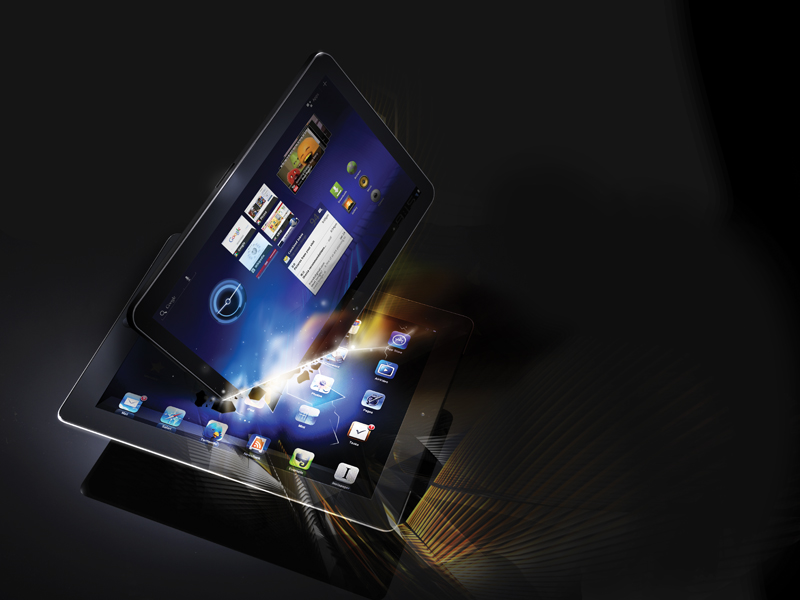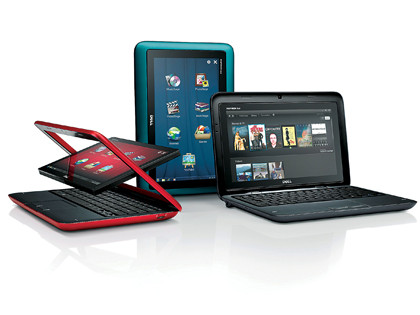
What makes one tablet a winner and another a bucket of bolts? Let's start with a story.
Once upon a time, there was a little English company called Acorn Computers. Through the early 1980s, it had quite a bit of success with an 8-bit home computer named the BBC Micro. You may remember it.
For a replacement, Acorn decided that none of the then-available processors - such as the Motorola 68000 and Intel 80286 - were suitable. So it decided to make its own, as you do.
The year was 1985 and Acorn developed a 25,000 transistor RISC processor called the ARM v1. It used it to power the now defunct Archimedes computer, and that same ARM core - with a few enhancements - is what now powers more than 75 per cent of all embedded 32-bit devices made in the 21st century, 90 per cent of all mobiles in the last five years, and the majority of tablets, including the iPad.
This amazing success is partly to do with how ARM Holdings sells the processors, in that it doesn't. It licenses the design IP so anyone out there can create their own ARM-powered processor or hybrid system. So the A4 processor in the iPad is ARM powered, is the same as the Galaxy Tab, sits at the heart of Nvidia Tegra and also inside almost all smartphones.
The original ARM v1 had no pipelines, no cache and no MMU. The latest v7 design is used in a bewildering array of different processors and consumer devices, uses the Cortex-A line and is the first multi-core capable design from ARM.
There are two main variants you'll want to keep an eye out for. The Cortex-A8 is a single-core implementation that uses a 13-stage pipeline, up to 32KB L1 cache and 1MB L2 cache, an MMU and an optional FPU, and has a maximum clock speed of 1GHz. You'll find it in the original iPad A4 chip and the HTC Desire.
Sign up for breaking news, reviews, opinion, top tech deals, and more.

The more recent and better Cortex-A9 is a quad-core capable variant with a 13-stage out-of-order pipeline, up to 64KB L1 cache and 8MB L2 cache, an MMU, an optional FPU and a maximum clock speed of 2GHz. A dual-core version of this is inside the iPad 2 A5 chip and the Motorola Xoom.
A cheaper version is the Cortex-A5, which has no L2 cache and a maximum speed of 1GHz or 600MHz for the low-power variant.
For 2012, ARM has the Cortex-A15 lined up. It promises at least a 40 per cent leap in speed per clock over current designs.
The other players
Of course, ARM isn't the only name in the game; both Intel and AMD are hammering their own stakes into the market.
The AMD Fusion ship has already set sail in the Acer Iconia W500 tablet, which uses the AMD Fusion C-50 system-on-a-chip (SoC) processor.
Running at 1GHz with two x86 cores and a 512KB L2 cache, it still draws 9W of power, which might be good for a Windows laptop but is nowhere near the sub-1W that ARM devices can achieve. Hence the shorter, four-hour battery life while playing video, versus 10 hours on an iPad.
But its main design goal is to drive Windows systems - it sports full DirectX 11 graphics, though lacks the CPU and GPU grunt to run anything recent of note.
On the Intel side, tablets fall into two groups: full Sandy Bridge models and Atom-powered units. The Asus Eee Slate EP121 is a perfect example of a 'fully featured' Core i5 Windows tablet. It costs £999 and has a two-hour battery life. But, then, tablets like this aren't supposed to compete with consumer ones. They're business tools for business solutions, such as medical imaging in a networked environment.
Going atomic
The big hope for Intel is its Atom range, which we're all familiar with thanks to the lock-down netbook design. Unlike the AMD Fusion and Sandy Bridge Core, architects for the Intel Atom took out a heap of features to make it less power hungry, primarily giving it an in-order pipeline, a limited 512KB L2 cache, a single-channel memory controller and no SSE4, among other things.
Even though the original Atom N2x0 only drew 2.5W, it needed an additional system chipset that consumed 9.3W, totalling 11.8W.
It was the Pineview SoC models - which integrated graphics into the Atom N450 single-core and N550 dual-core models, dropping total power to 5.5W and 8.5W - that made these more acceptable, boosting netbook battery life towards the eight-hour level.

The Atom N550 is found in the new Dell Inspiron Duo Sparta convertible netbook/tablet but, again, battery life struggles to make the four-hour mark.
However, for Intel the game won't really start until the first Atoms using the 32nm production process launch by the end of 2011. Its Medfield variant will initially pop up in phones, but a 32nm Atom will arrive in tablets and offer full 1080p HD playback.
Nvidia Tegra 2 SoC
One familiar name that's starting to win friends in tablets is Nvidia, with its Tegra 2 SoC. It's an ideal example of what many other brands do in the mobile space: take the ARM core and build a system around it. That's how the A4 and A5 processors work.
The Tegra 2 is a 1GHz dual-core SoC built around the ARM Cortex-A9 core, using a unified 1MB of L2 cache and separate 32KB instruction and 32KB data caches for both cores.
Interestingly, alongside these sits a separate ARMv7 processor. This is a far simpler model that can deliver ultra-low power requirements, primarily when playing audio and video, helping extend battery life by shutting down the larger Cortex-A9 cores.
Talking of which, Tegra 2 boasts both a full 1080p hardware decoder and encoder. The former is designed to handle both local and streamed content, and is optimised for Flash video encoded with h.264 but also VC-1 and MPEG-4 video. Power consumption while playing 1080p video is less than 400mW.
The encode engine is designed to handle 1080p video at 30fps from an integrated camera, and both units can work in unison to deliver HD video conferencing. Alongside the video is a dedicated audio processor able to handle MP3 playback using less than 30mW of power.
An image signal processor is designed to take the raw output from any integrated cameras up to 12MP in resolution and 30fps, applying real-time image enhancement such as white balance and noise reduction. The output can then be saved as an image, or as a stream ready for compressing and broadcasting.
There's also a host of additional I/O requirements that Nvidia squeezes onto the silicon to handle security protocols and encryption, USB, HDMI, SPI touch controller, memory, NAND flash storage, PCIe and interfaces for radio. Many other models, such as the Texas Instruments OMAP3xxx series, Qualcomm Snapdragon and Samsung Hummingbird, provide similar abilities.
The one missing element is graphics. Mobile graphics are no different to desktop ones. It's just that, instead of a 200W, power-sucking card, you need a sub-1W solution that fits on a SoC.